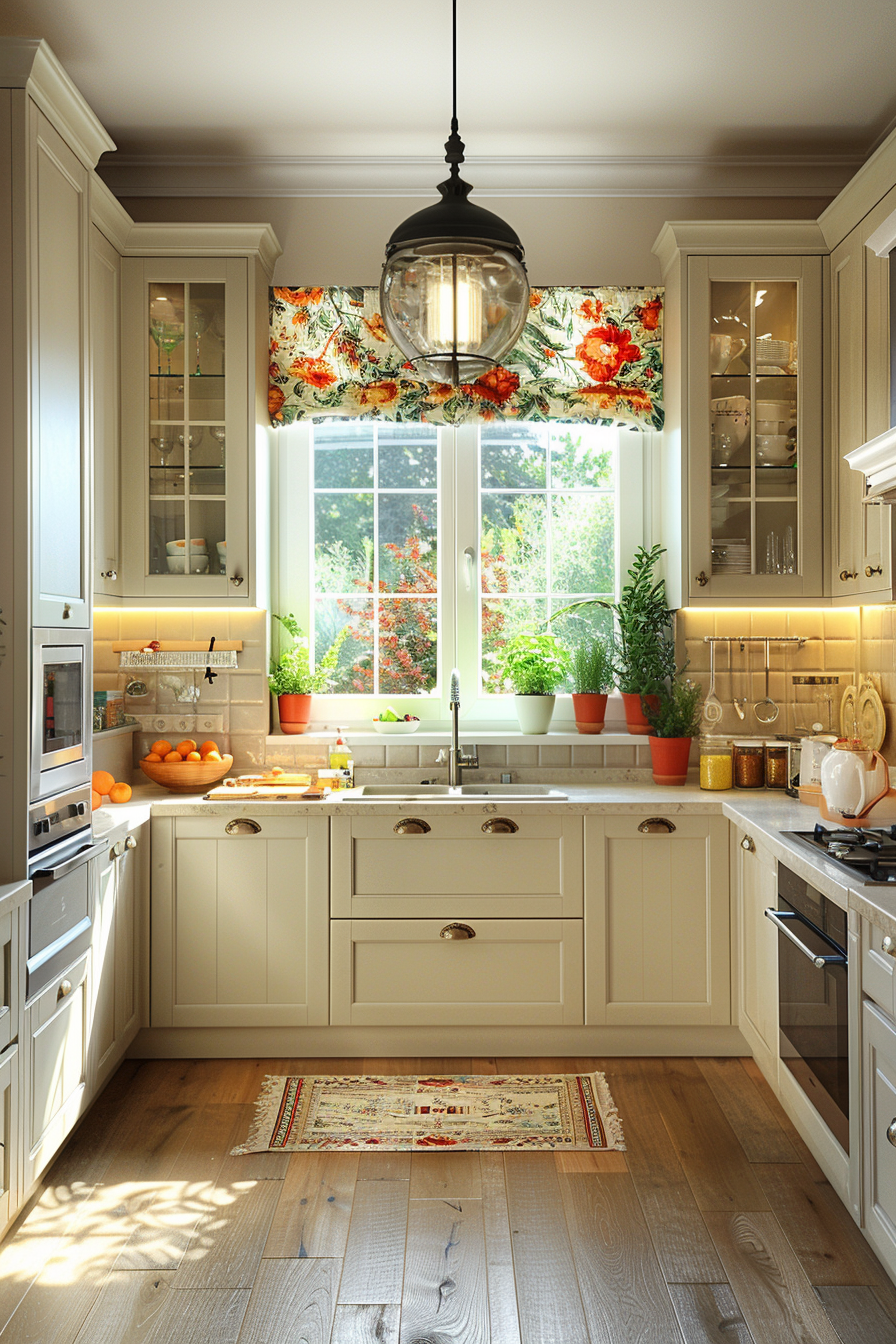
A kitchen with no windows can present unique design challenges as natural light is limited, creating a potentially darker and less inviting space. To combat this, it is important to incorporate adequate artificial lighting such as recessed ceiling lights, under cabinet lighting, and pendant lights to brighten up the room. Additionally, light-colored cabinetry, countertops, and backsplashes can help reflect light and create a more spacious feel. Consider using mirrors strategically to bounce light around the room and give the illusion of windows. Proper ventilation is also crucial in a windowless kitchen, so installing a powerful range hood and keeping the space well-ventilated can help prevent cooking odors and keep the air fresh. Lastly, incorporating greenery, artwork, or decorative elements can add personality and warmth to the space, making it a more enjoyable and functional kitchen despite the lack of natural light.
A kitchen with no windows can present a unique design challenge. Without natural light streaming in, the space can feel dark and enclosed. However, there are ways to overcome this limitation and create a bright and inviting kitchen. One option is to utilize reflective surfaces like stainless steel appliances or glossy cabinets to help bounce light around the room. Another strategy is to incorporate artificial lighting, such as recessed lights, under cabinet lighting, or pendant lights, to simulate the effect of natural light.
Incorporating light, neutral colors can also help to brighten up a windowless kitchen. Whites, creams, and light grays can make the space feel larger and more airy. Additionally, using light-colored countertops and backsplashes can further enhance the brightness of the room. Another design element to consider is the use of mirrors. Placing a large mirror on one wall can help to reflect light and create the illusion of a larger space. Mirrored backsplashes or cabinet doors can also achieve a similar effect.
Despite the lack of windows, it is important to create a functional and efficient kitchen layout. This may involve maximizing storage space with tall cabinets or utilizing clever storage solutions like pull-out shelves or drawer organizers. It is also essential to consider the flow of the kitchen and ensure that the layout allows for easy movement and access to essential appliances and work areas. By carefully planning the design and incorporating these strategies, a kitchen with no windows can be transformed into a bright and beautiful space that is both practical and aesthetically pleasing.
 home decor trends
home decor trends



